Mayor Paul Soglin’s Neighborhood Resource Teams are working to tune into Madison residents in order to address their needs by introducing neighborhood-based improvement projects to the city budgets and planning.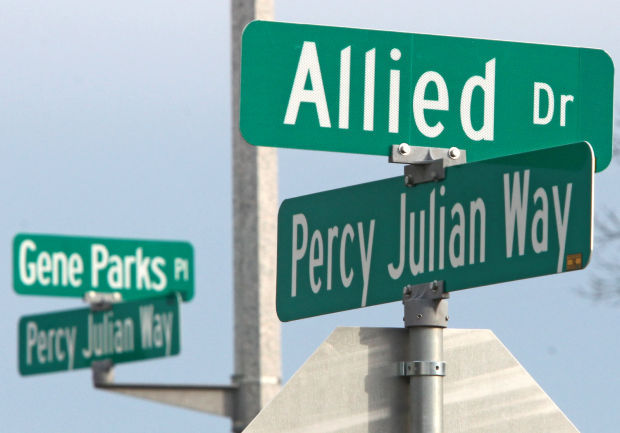
Soglin created the Neighborhood Resource Teams in 1991 during his second term as mayor after noticing the division between government departments, where the topic-style organization of agencies prevented cohesive collaboration.
“It became obvious that we needed a better approach in terms of the needs of specific neighborhoods,” Soglin said. “It was also obvious that the services provided should be in response to the neighborhood identifying priorities rather than the city making those decisions.”
The Mayor’s office identified neighborhoods it felt would benefit and formed teams comprised of city employees across government agencies. The teams focused on small pockets of the city until 1997, when Soglin left office. Then, he said, the teams were viewed as a “such a good idea, that the entire city should be served by NRTs.”
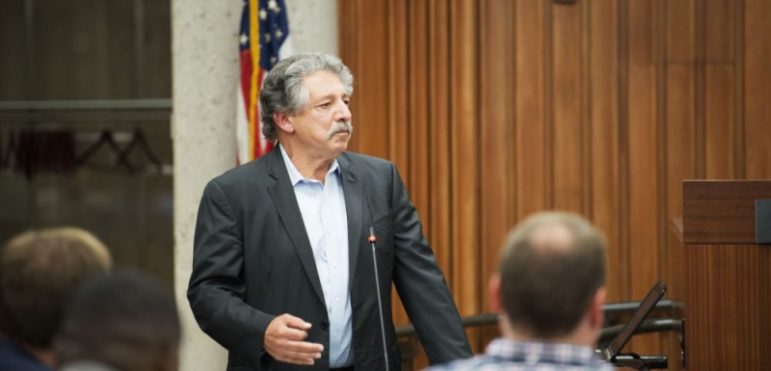
The new system divided Madison into four areas, where teams served upwards of 10,000 people, which Soglin said defeated their purpose. The teams began to flounder, and when Soglin was reelected in 2011, they were practically nonexistent. He reevaluated the system and returned the teams to their original format.
The nine present teams have two team leaders and serve populations ranging from 500 to 2,000 residents. The Leopold/Arbor Hills, Allied Drive, Balsam/Russett, Brentwood/Northport Corridor, Darbo/Worthington, Hammersley/Theresa, Owl Creek, Park Edge/Park Ridge and South Side neighborhoods are covered today. The neighborhoods were picked based on several driving criteria, including the number and type of police calls and results of building inspections.
“They’re really a place-based racial equity strategy and fundamentally all about racial equity and inclusion focusing in on different neighborhoods,” said Tariq Saqqaf, neighborhood resource coordinator.
Saqqaf oversees the teams and determines team leadership. A mayor’s initiative mandates each agency has representation, so the director of the individual government agency coordinates a group of volunteers, and Saqqaf assigns their position and team.
Measuring Success
The teams aim to create an agenda based on the issues residents find important. They depend on community voices to establish what needs to be addressed. Priorities and projects differ from team to team, but there is consistency in major needs.
Transportation, child care, housing, stable employment, education, health, which includes access to food, safety, and play are the bottom-line issues looked at by every team. And, safety doesn’t necessarily mean crime or violence, but often traffic safety, well-lit and structured roads and paths and speed bumps on residential roads.
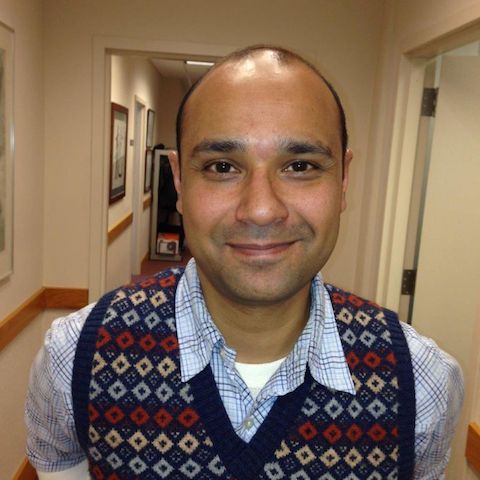
“That’s exactly the kind of thing we’re talking about,” said Saqqaf. “The city is doing the things it’s supposed to be doing in places where we haven't done a great job of listening to folks and recognizing how this process works.”
Some of the neighborhoods covered by the original teams improved significantly, meaning there was no longer a need for an NRT, which allowed the city to focus on new neighborhoods. The teams have had many successes since their rebirth in 2011, including leveraging tens of millions of dollars for city projects.
NRTs have helped push for both adjusted and new bus lines, new and redesigned parks, neighborhood centers and street reconstruction. Smaller projects like putting lighting on a North Side basketball court or getting new hoops for the court at Grant Park are just as important, too.
To Saqqaf, other successes are more salient.
“It's more to me the changing culture that I’ve seen at the city over the past five years as folks at all sorts of different levels have oriented more to community voice and tried to really figure out ways that are more receptive and responsive to people in the community,” he said.
He recalled a city planner who fought for a higher frequency of busses to certain neighborhoods after having conversations with community members and realized city transportation services weren’t working for those who actually used them. Initially, he had argued against an increase in service, but he is now fighting for an increase in transport services in his department because the NRT shifted his perspective.
“That to me is the greatest success,” Saqqaf said. “The fundamental shift in thinking where people are trying to figure out how can we do this, how can we get this to work for people in real ways that are going to resonate with them?”
On-the ground with NRTs
Allison Dungan of the Northside Safe and Thriving Communities Initiative became co-lead of the Brentwood/Northport Corridor resource team in November. Recently, her team discussed improving safety in a pedestrian tunnel on Troy Drive that passes beneath a railroad, and they arranged for a city engineer to attend a meeting to discuss the project.
Other times, Dungan has connected the dots through peers and colleagues. She doesn’t work directly with housing in her role, but others in her department do. When issues surrounding ownership of an apartment complex that led to frequent resident displacement arose, she was able to connect a representative from housing to the NRT and later, the complex.
“It’s more about being connected to the community, and then whatever the community says are the issues that are important to them, trying to see if we can connect them to city resources,” Dungan said.
Another success Dungan’s team had included summer youth programming at Warner Park, where neighborhood kids helped plan and cook a meal to share together, then play games or use the basketball court. The programming, which drew 25 to 45 kids each time, was a result of NRT communication and allowed kids to give their opinion on their community.
Rachel Goldberg, a health impact specialist at the Public Health department, assumed the role of co-leader for the Southside NRT in November 2017 but has been a member of the team for over a year.
Through team connections and discussion regarding loitering and maintenance issues at Penn Park, a parks representative organized and promoted a local event where he invited families and students from the neighborhood to “come and connect with each other and feel like they have ownership,” Goldberg recalled.
She credits the redesign of the park to connections the city parks division made through the NRT with the library, which boosted outreach efforts and led to more understanding on what community members wanted out of the park and their vision.
Finding community participants
Not every team found success originally, and the present teams still struggle with similar challenges, including community representation and funding.
“There were common characteristics shared by the successful ones, and common characteristics shared by the ones that had not done well,” Soglin said. “It was community leadership; where we had active, vibrant community leadership, the teams were supported and the neighborhoods significantly improved.”
The Brentwood/Northport Corridor resource team typically has a high level of community engagement. The team works closely with direct service providers, such as social workers from Joining Forces for Families, public health nurses, apartment managers and program staffers.
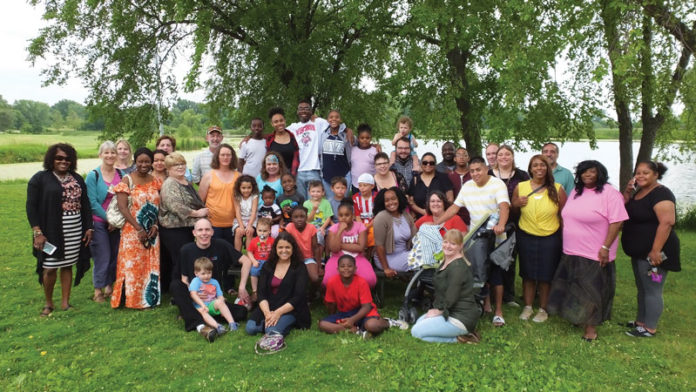
She also works with Northside Navigators, community residents hired to participate in community organizing, amplify the voices of residents, and bring awareness of resident-focused issues to the NRT, PTO and neighborhood association meetings.
Goldberg’s team struggles to get the same level of engagement as other teams. The South Side resource team meetings are attending mostly by city employees. The team’s greatest resource are the neighborhood resource officers, who are rooted in the community.
Officer Amanda Analla joined the South Side community policing team four years ago before becoming the neighborhood resource officer for Bram’s Addition two years ago.
As the neighborhood resource officer, Analla is involved in the South Side community and dedicates time to connect with residents. When she was first hired, she went door-to-door to introduce herself and handed out her business card. Now, she hosts a cookout for the neighborhood surrounding Mount Zion Baptist Church every week and regularly attends events at apartment complexes and parks.
Analla tutors at the Mount Zion Academic Learning Center and reads to pre-school and daycare children once a month. She also gardens at the Madison Police Department community garden plot, and often while she’s patrolling the neighborhood, she’ll stop to chat or play basketball with kids at the park.
“Just going to the community events and just talking to people and just sharing a little bit about myself, I find out what people’s interests are,” Analla said.
Analla has her fingers on the pulse of the South Side community, but she recognizes that that’s not enough for the entire resource team, and more connections are needed for it to be successful.
Saqqaf said attending the meetings isn’t a priority for folks, so making connections outside the meeting is just as important. Community-based representatives like Analla help to carry the voices of residents.
“The intent isn’t to get people at the meetings because the reality is that would never be a strategy that would get us very far,” Saqqaf said. “It’s still fundamentally trying to get people to act in a way that caters to our design as opposed to getting us to act in a way that caters to what works for people.”
The limits of NRTs
Saqqaf wants to make sure residents are aware of the teams in every neighborhood they serve, but he’s “not that interested in getting the word out just to get the word out. If it’s something that people feel like they need to know about, that’s going to happen naturally.”
Instead, Saqqaf believes the teams must focus on connecting with residents in real and relevant ways through attending community events, connecting with community leaders and organizers and leveraging established relationships.
Reverend Marcus Allen, the pastor of Mount Zion Baptist Church, moved to Madison in October 2016 and attended his first Southside NRT meeting before the year was over. He doesn’t have a negative view about the teams, but he recognizes there are pieces to a successful team that the South Side is missing.
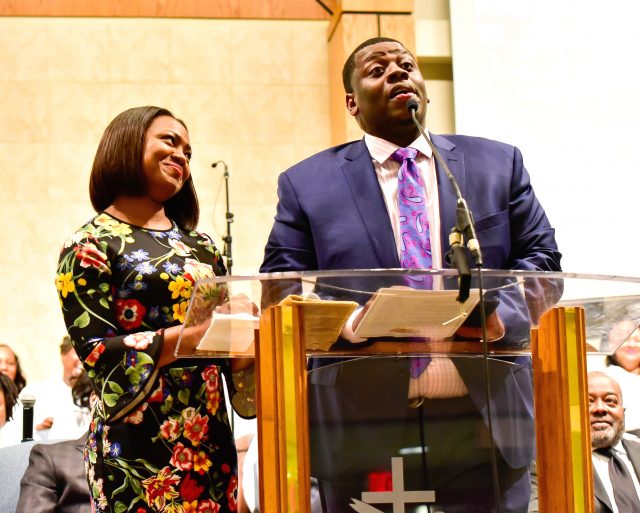
Allen believes reforming the teams to incorporate community members as team leaders rather than using city employees would benefit both the Madison government and neighborhoods. He also feels there needs to be an initiative to involve more South Side residents, but he hasn’t seen an intentional effort by the team to do so.
City employees who work with the NRTs don’t have to live in the neighborhoods they serve, which means they’re sometimes out of touch with what the community needs and wants, especially in communities where resident engagement is low.
“I work here, downtown,” Goldberg said. “I live on the isthmus. I fly into the NRT once a month, and then I leave. To me, that doesn’t feel like a really rooted experience.”
Allen feels a lack of resident voices could be due to a lack of awareness and few efforts by the NRT to raise awareness of their presence. He said he hasn’t talked to many people who ask about the South Side’s resource team or are fully aware of the team’s responsibility to and role in the neighborhood.
He suggested going straight to the residents to introduce them to the team by knocking on doors, engaging through social media and creating a website or newsletter.
“That’s why the leader must be someone who’s embedded in the community and someone who has passion, and not just about their interests, but they know the interests of everybody that’s in the community," Allen said. “People that are really invested in this community leading the resource team and then speaking up for those who can't speak for themselves. And then action behind words.”
The timing of the meetings also works against resident involvement. The meetings occur once a month on a Tuesday at 9 am. City employees who serve on an NRT are paid to be there, but residents are not. Instead, they must leave their jobs or find child care in order to be involved.
“The teams are not a substitute for neighborhood leadership,” Soglin said. “The teams can always do better. The only thing we’re always looking for is that neighborhoods benefit, and obviously I’d always like to have the financial resources we need.”
There is no specific budget for the resource teams. Rather, the intent is for residents to make recommendations or highlight issues, which do not go through the city’s typical budget review process, “because that would actually defeat the nature of the teams,” Soglin said. “We simply have to make decisions.
And, although the absence of resident voices doesn’t mean there’s an absence of interest or desire for involvement, Goldberg and Analla agreed that it can be difficult to initiate and complete projects when they aren’t the ones immediately impacted.
"Something that would be helpful for our neighborhood resource team is a strategic plan: what are the issues, what are we trying to solve in the next year,” Goldberg said. “We don’t float around, but we definitely just sort of talk through things and don’t have any kind of action-oriented 'this is what we're going to do.’”
Getting NRTs to Work for Communities
A transparent action plan could help the teams be more successful in achieving goals, completing projects and involving community members. Goldberg had a chance to attend the team meeting for the Allied Drive neighborhood. A community member helps lead the meetings, and the team sees high members of community members attend who are able to have their needs met quickly.
Goldberg hopes the South Side team can achieve a similar structure with an engagement plan and a strategy for tackling projects and initiatives.
Allen envisions an evaluation system for the NRTs, which would allow residents and community leaders, as well as members of the team that work for the city, to report how the team is doing, what their challenges are and what they need to do to improve.
“I think they should be giving a report to the community on what they're doing since they're using tax dollars for the time being there,” Allen said.
The South Side resource team is on its way to greater involvement, too. Taking Saqqaf’s advice, they frequently leverage relationships with services already working with the city and in the community, like Joining Forces for Families, whose executive director is on the team, as well as other nonprofits, spiritual leadership and local partners.
“We’ve done a lot of talking, but I think things are starting to change where we want to make more of an impact but also make sure that we’re supporting the residents in the neighborhood,” Analla said. “We don’t want to be the ones making decisions, but either helping guide them, giving them the resources and materials they need to start making changes in the neighborhood.”




